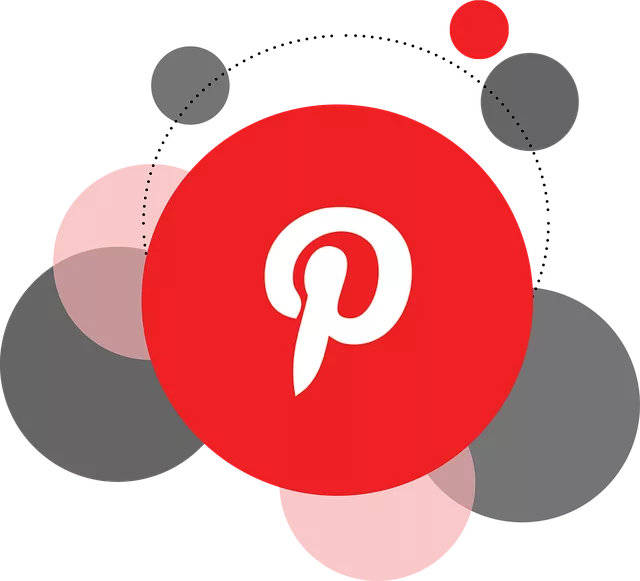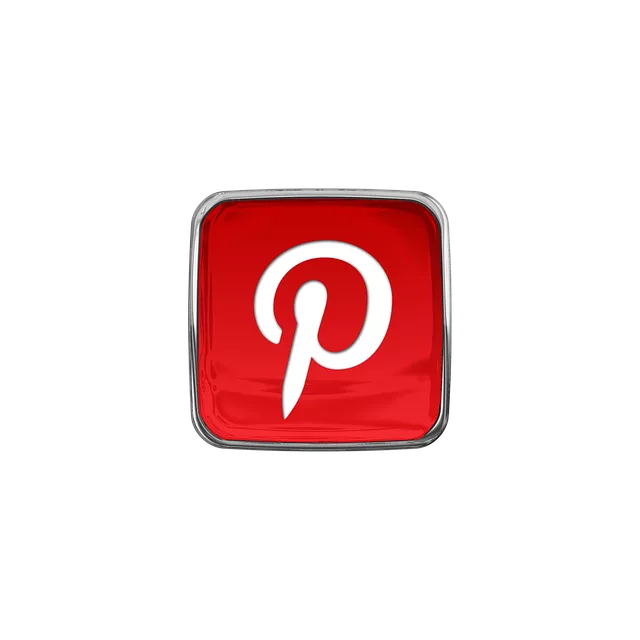In the affiliate marketing world, where competition is fierce and attention spans are short, finding platforms that deliver consistent and scalable traffic is a dream. For many marketers who rely on content to generate clicks and conversions, Pinterest has quietly become one of their arsenal’s most underrated yet powerful tools. When used correctly, Pinterest can turn a simple pin into a traffic-driving machine that fuels affiliate sales and long-term passive income.
Pinterest is not a typical social media platform. It is often better described as a visual search engine. While Instagram and TikTok revolve around real-time engagement and fleeting content, Pinterest focuses on evergreen discovery. Content posted on Pinterest can continue to surface for months, even years, making it one of the few platforms where your efforts today can pay off long into the future.
Its virality and longevity potential set Pinterest apart for affiliate marketers. A well-designed pin that resonates with the right audience can be repinned thousands of times, sending continuous traffic to your affiliate content. This kind of reach leads to scalable results and, ultimately, sustained passive income.
But going viral on Pinterest is not about luck. It is about understanding the platform, tapping into its unique user behavior, and mastering the art of visual storytelling. This article will explore how to create viral content on Pinterest designed explicitly for affiliate marketing success. Whether promoting digital products, physical goods, or online services, these strategies will help you reach more people, drive more traffic, and grow your income with integrity and impact.
Understanding Pinterest’s Unique Role in Affiliate Marketing
Pinterest is where people go for ideas, inspiration, and solutions. Users are not there to socialize. They are there to plan, to dream, and to make decisions. This makes Pinterest an ideal platform for affiliate content that solves problems or enhances lifestyles.
Unlike traditional search engines, Pinterest presents search results in the form of visual pins. Each pin is a gateway to deeper content. When someone clicks a pin, they are taken to a landing page, blog post, or product recommendation. This journey provides a seamless way for affiliate marketers to introduce a product or service that matches the user’s intent.
The most successful Pinterest affiliate strategies do not rely on pushy sales tactics. Instead, they focus on inspiration. A pin showing “10 Home Office Essentials For Remote Work” or “How I Built Passive Income From Blogging” can naturally introduce affiliate links within the content while providing genuine value.
Users on Pinterest are often in the research or discovery phase of the buyer’s journey. This means they are open to recommendations, especially when those recommendations are visually appealing and aligned with their goals. By tapping into this behavior, you can position your affiliate offers in a helpful, not promotional way.


Laying the Foundation for Viral Content
Before creating viral content, you must understand what makes a pin shareable. Virality on Pinterest is driven by visual appeal, relevance, and discoverability.
First and foremost, your content must be valuable. This goes beyond the pin itself. The destination your PIN links to must deliver on the promise made in the image. If your pin says “5 Ways to Make Passive Income From Home,” the linked content must provide actionable, high-quality information. Otherwise, users will bounce, and Pinterest’s algorithm will stop showing your pin.
Relevance is another key factor. Your content should be tied to seasonal trends, popular searches, or evergreen topics that consistently perform well on the platform. Pinterest users often plan. Think of weddings, holidays, home renovations, personal finance goals, or health resets. Align your content with these themes to increase visibility.
Visual design is where most marketers fall short. Your pin must grab attention in a sea of other images. It should be easy to read, aesthetically pleasing, and formatted correctly for Pinterest. The optimal pin size is a vertical ratio, ideally 1000 by 1500 pixels. Use bold text overlays, branded colors, and clear visuals related to the topic.
Once you have these foundations in place, you are ready to create content that has the potential to go viral.
Crafting Pin-Worthy Headlines
Every viral pin starts with a compelling headline. Your headline is not just a title. It is a promise. It tells the user what they will get if they click through.
The best headlines evoke curiosity, provide clarity, or offer a solution. A headline like “How I Made My First $500 From Affiliate Marketing” is specific and relatable. It tells a story while promising insight.
Numbers tend to perform well because they signal structure and value. For example, “7 Tools That Helped Me Build Passive Income Online” or “5 Mistakes to Avoid When Starting a Blog” are both highly clickable.
Avoid clickbait or misleading claims. Pinterest users are savvy. If they feel tricked, they will not engage, and your pin will lose traction. Instead, focus on honesty and usefulness.
Test multiple headlines for the same topic. You can create several pins linking to the same article or product page, each with a different hook. This helps you determine what resonates most with your audience and increases your chances of a viral hit.
Designing Pins That Get Shared
Visual appeal is what draws users to your pin in the first place. Good design does not require professional software or artistic talent, but it does require attention to detail.
Use clear, high-contrast fonts that are easy to read on mobile screens. Most Pinterest traffic comes from mobile devices, so your text must be legible even when scaled down.
Stick to a consistent color palette that aligns with your brand. This creates recognition over time. When someone sees your pin, they should associate your colors and style with helpful content.
Use images that relate to the content. For example, if you are promoting a finance tool, do not use a picture of flowers. Instead, use visuals like laptops, notebooks, graphs, or workspaces that suggest productivity and financial planning.
Text overlays should communicate the core value of your pin. A simple sentence or question can go a long way. Make sure the text does not crowd the image. Leave room to breathe.
Include your logo or website at the bottom of the pin. This protects your content and reinforces your brand, especially when pins are reshared outside your control.
Use design tools like Canva or Adobe Express, which offer templates specifically for Pinterest. These tools simplify the process and ensure your pins meet technical requirements.
Writing Effective Pin Descriptions
While the image grabs attention, the description provides context. Pinterest allows you to add a short description below your pin. This is a valuable opportunity to include keywords and guide the user toward action.
Your description should naturally include relevant search terms. Consider what your audience would type into Pinterest when looking for content like yours. Phrases like “passive income tips,” “work from home ideas,” or “affiliate marketing for beginners” are examples of searchable terms that can help your pin appear in results.
Do not overstuff keywords. Write in a conversational tone. Share what the content offers and who it is for. You might write, “Looking to start earning passive income online? Discover simple affiliate marketing strategies that work even if you’re a beginner.”
Include a call to action. Invite the user to click, read, or explore more. Clear direction improves engagement. For example, you might say, “Click through to see the full guide and learn how to get started.”
Descriptions also allow you to include hashtags, though Pinterest places less emphasis on them than other platforms. Use them sparingly and only when they fit naturally.
Strategically Placing Affiliate Links
Pinterest has strict guidelines regarding affiliate links, and failing to follow them can limit or suspend your account. Always read the latest Pinterest policies and check the rules of your specific affiliate program.
Some affiliate programs allow direct linking on Pinterest. This means you can pin directly to your affiliate link. Others require you to send users to a landing page, blog post, or bridge page that contains the affiliate offer.
Whichever method you use, always disclose your affiliate relationship. Transparency builds trust and keeps you compliant with regulations. You can include a short note in the description: “This post contains affiliate links. I may earn a commission if you purchase at no extra cost.”
Ideally, your pins should lead to high-value content. This could be a blog post, a detailed review, a comparison guide, or a helpful tutorial. Within that content, you can include multiple affiliate links in a context that makes sense to the reader.
By focusing on value first and promotion second, you create a more authentic experience that is more likely to convert.
Using Pinterest Analytics to Refine Your Strategy
Once your pins are live, the work does not stop. Pinterest provides a built-in analytics dashboard that allows you to track impressions, clicks, saves, and engagement rates. This data is invaluable for refining your strategy.
Pay attention to which pins are getting the most traction. Look at common elements such as color schemes, headlines, or topics. Use this information to guide future content creation.
Evaluate your click-through rate. The design or headline may need tweaking if a pin has high impressions but low clicks. If the click-through rate is strong but conversions are low, the landing page or affiliate offer may need improvement.
Test new designs and headlines regularly. Pinterest rewards fresh content, so updating your pin strategy keeps your profile active and relevant.
Consider seasonal trends and adapt your content calendar accordingly. For example, content about budgeting and money-saving often spikes in January. Travel pins tend to perform well in the spring and summer months. Aligning your topics with these patterns increases your chances of going viral.
Building a Sustainable Pinterest Marketing System
Viral content is exciting, but long-term income comes from sustainability. Instead of chasing one-off wins, focus on building a consistent system.
Create a content schedule where you pin new material regularly. Even three to five pins a week can lead to significant growth. Repurpose old content into new pins with updated designs or headlines.
Organize your Pinterest boards strategically. Group pins by topic, product type, or audience segment. This improves user experience and helps Pinterest understand your niche.
Engage with the platform. Repin relevant content from others, follow accounts in your niche, and respond to comments. Pinterest may be more search-based than social, but engagement still matters.
Keep refining your skills. Study high-performing pins. Learn from top creators. Stay up to date with Pinterest’s algorithm changes and design trends.
Over time, your Pinterest account becomes a lead-generating engine. Each pin is a doorway to your affiliate offers. Each visitor is a potential customer. And every click, every save, every share compounds your results.
Pinterest is not just about pretty pictures. It is a powerful platform for storytelling, problem-solving, and community building. For affiliate marketers who understand how to create resonant content, it offers an extraordinary opportunity to generate traffic, build trust, and make actual passive income.
Going viral is not about chance. It is about preparation, strategy, and connection. You can create pins that travel far and deliver real results by focusing on high-value content, compelling visuals, and consistent delivery.
The best time to start is now. Choose a topic your audience cares about. Design a pin that stands out. Write content that helps. And watch as Pinterest becomes one of the most effective growth drivers in your affiliate business. With intention and consistency, what you create today can keep working for you well into the future.
